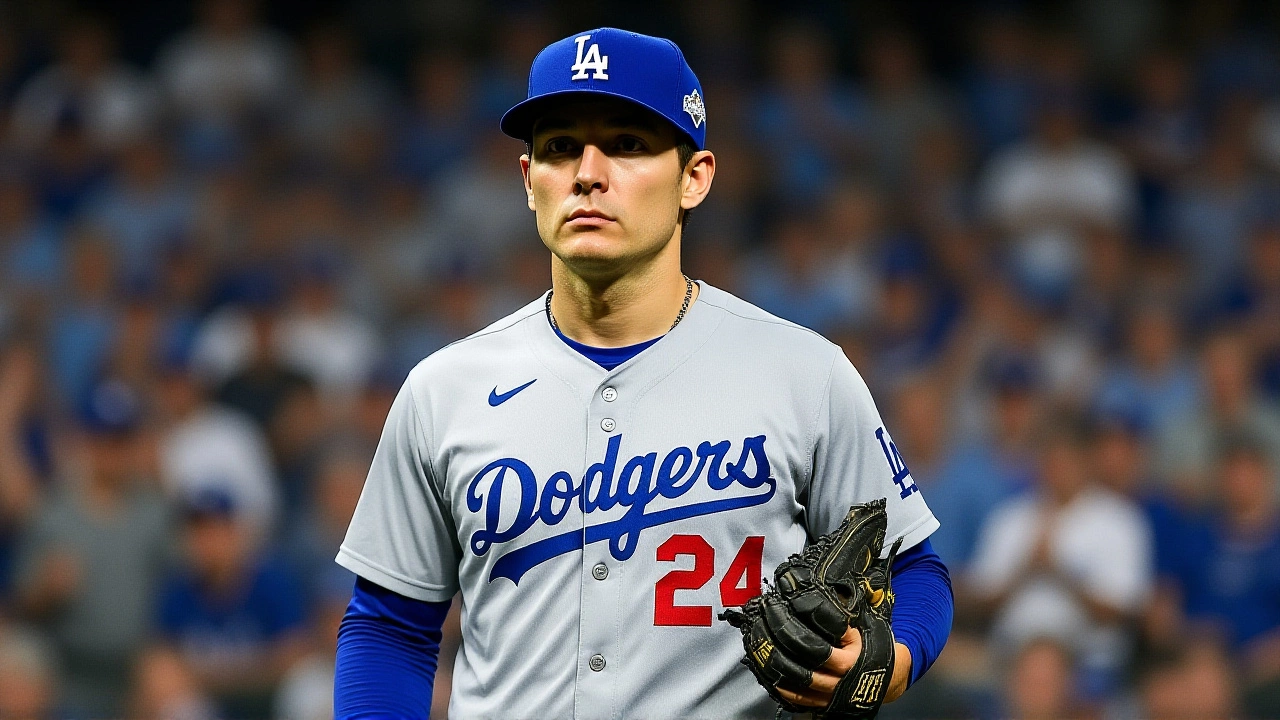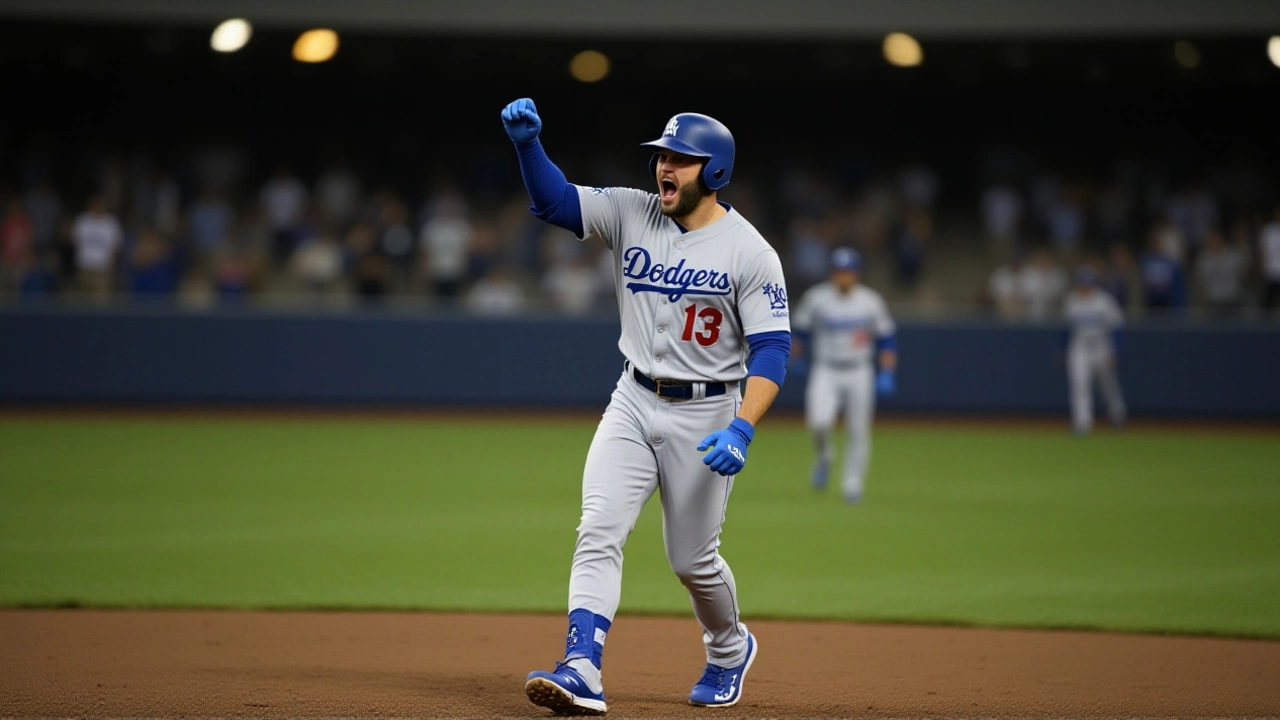When Max Muncy, the power‑hitting first baseman for the Los Angeles Dodgers, stepped up to the plate at American Family Field on October 14, 2025, nobody could have predicted the historic blast that followed. Facing right‑hander Freddy Peralta in the top of the sixth, Muncy launched a 412‑foot solo homer that not only gave the Dodgers a 3‑1 edge in Game 2 of the 2025 National League Championship Series (NLCS 2025) but also shattered the franchise record for career postseason home runs, taking his total to fourteen.
Record‑Breaking Blast
The ball arced cleanly over the center‑field fence, a sight that turned the already‑electric atmosphere into something akin to a fireworks display. NBC Sports described the shot as an "impressive 412‑foot blast," and the crowd’s roar lasted well beyond the typical post‑home‑run applause. With the margin widening to 5‑1 by the end of the game, the Dodgers seized a commanding 2‑0 series lead, putting the Brewers on the back foot early in a best‑of‑seven format.
How Muncy Got Here
Muncy’s journey to this moment reads like a modern‑day baseball novel. After being acquired from the Oakland Athletics in the 2017 offseason, he spent two seasons maturing in the Dodgers’ farm system before making his major‑league debut in 2018. Over eight postseason appearances spanning 2020, 2021, 2022, 2023, 2024, and 2025, he amassed 70 playoff games, a figure that underlines both his durability and the Dodgers’ sustained success. His first big‑league homer came on April 15, 2018, versus the San Francisco Giants – a modest start to a career that now includes two World Series rings (2020, 2024) and two All‑Star selections (2019, 2021).
Reactions from the Diamond
After the swing, a visibly pleased Muncy told reporters, "It means a lot to me. The Dodgers are a franchise with a rich history. Breaking that record is significant, but what matters most is that it highlights my opportunity to participate in so many postseason games. That's the essence of being a Dodger." Manager Dave Roberts praised the timing, saying, "Max delivered when we needed it most. That kind of power shifts momentum in a series." Even the Brewers’ staff tried to stay upbeat; pitching coach Steve Karsay noted, "Peralta threw a solid pitch, but the ball jumped out of the park. You salute a guy who can do that in October."
What It Means for the NLCS
Beyond the personal milestone, Muncy’s homer has strategic implications. A 2‑0 lead in a 2‑3‑2 schedule lets the Dodgers head home for Games 3, 4, and 5 with a cushion that forces Milwaukee into a win‑or‑die scenario. The Brewers, who entered the series with a postseason opponents’ batting average of .210, now have to scramble for runs against a Dodgers staff that has already pummelled them in Game 1, highlighted by Blake Snell’s dominant outing.
Front office chief Andrew Friedman has long spoken about building a roster that thrives under pressure. "We emphasized depth and clutch performance when we shaped this team," he said in a post‑game interview. "Max’s record is a testament to that philosophy. It’s not just about the regular season; it’s about delivering in October when a championship is on the line."

Historical Context
Before Muncy, the Dodgers’ postseason home‑run leaderboard was a three‑way tie at 13, shared by Justin Turner, Corey Seager, and Muncy himself. Legends like Duke Snider (11) and Steve Garvey (10) held the record for decades during the Brooklyn and early Los Angeles eras. Muncy's 14th homer nudges him into the top‑10 active list across MLB, slotting just behind Aaron Judge (15) and ahead of José Altuve (13). The achievement also underscores the Dodgers’ recent run of success: eight World Series appearances in the last decade, capped by championships in 2020 and 2024.
American Family Field, the venue for the record‑breaker, has been the Brewers’ home since 2001 and seats roughly 41,900 fans. Its spacious outfield typically suppresses long balls, making Muncy’s 412‑foot blast all the more remarkable.
Looking Ahead
Games 3, 4, and 5 shift to Dodger Stadium in Los Angeles, starting October 22. If the series heads to a Game 6 or 7, Milwaukee will reclaim home‑field advantage, turning the swing back in their favor. For now, the Dodgers aim to capitalize on Muncy’s momentum, while the Brewers must regroup and find ways to contain the Dodgers’ deep‑ball threat.
Frequently Asked Questions
How does Max Muncy’s record affect the Dodgers’ chances in the NLCS?
Muncy’s 14th postseason homer not only gives the Dodgers a 2‑0 series lead but also provides a psychological boost. The record shows his consistency in high‑pressure situations, which can demoralize the Brewers and inspire the Dodgers’ lineup to stay aggressive.
What makes a 412‑foot home run at American Family Field notable?
The park’s dimensions and wind patterns generally curb long hits. A 412‑foot blast clears the center‑field fence by a wide margin, ranking among the longest postseason homers recorded at that venue.
Who are the other Dodgers players close to Muncy’s postseason HR tally?
Both Justin Turner and Corey Seager sit at 13 career postseason homers. If they stay healthy, they could challenge Muncy’s lead in future October runs.
What adjustments might the Brewers make after the loss?
Brewers’ pitching coach Steve Karsay is likely to tweak his staff’s approach to limiting power hits, perhaps employing more high‑fastball counts to keep hitters off balance. Offensively, the Brewers will need to generate early runs to negate the Dodgers’ power advantage.
When is the next NLCS game and where will it be played?
Game 3 is slated for October 22, 2025, at Dodger Stadium in Los Angeles. The series will then alternate to the Dodgers’ home park for the next two games before returning to Milwaukee if necessary.

